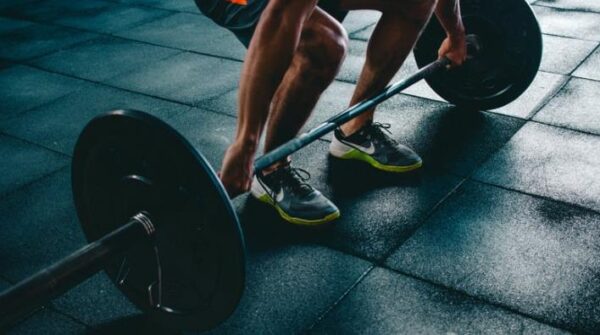Have you ever wondered why your heart starts racing when you hit the gym or go for a run? The answer lies in the fascinating interplay between your cardiovascular system and physical activity. Join us as we dive into the science behind why your heart rate increases when you exercise, uncovering the amazing ways in which your body responds to movement and effort. Let’s explore the captivating world of how exercise affects your heart and overall health!
Understanding the Physiology Behind Heart Rate
The heart, a vital organ in our body, tirelessly works to circulate blood and nourish our cells with oxygen and nutrients. This incredible muscle adapts its beating speed, known as heart rate, based on various factors like how active we are, the stress we experience, and our physical fitness levels.
When we engage in physical activity or face stressful situations, our heart rate typically increases to meet the heightened demand for oxygen delivery throughout the body. Regular exercise can positively impact our resting heart rate over time by strengthening the heart muscle.
Understanding these physiological responses sheds light on how intricately connected our hearts are to our overall well-being. By appreciating the complexities of this dynamic system, we gain insight into why maintaining cardiovascular health is essential for a thriving life.
Why Does Your Heart Rate Increase When You Exercise?
Role of Oxygen Delivery During Exercise

When you engage in physical activity, such as exercise, your muscles kick into gear and demand more oxygen to function optimally. This heightened need for oxygen is met by your hard-working heart, which responds by pumping blood at a faster rate throughout your body.
As the heart beats faster, it ensures that oxygen-rich blood is efficiently delivered to the working muscles. This process enables the muscles to generate energy and sustain movement during exercise.
The increased circulation of oxygenated blood helps fuel muscle contractions and supports overall performance during physical exertion. Without an adequate supply of oxygen, the muscles would quickly fatigue and struggle to meet the demands of rigorous activity.
Therefore, the role of oxygen delivery during exercise is crucial in sustaining muscle function and optimizing athletic performance.
Impact of Muscular Activity on Heart Rate
When you engage in physical activity, your muscles are hard at work. As they contract and relax to power your movements, they demand more energy to sustain their performance. This increased muscle activity calls for a greater supply of oxygen to meet the heightened metabolic demands.
Your heart responds by beating faster, ensuring that oxygen-rich blood is swiftly delivered to the working muscles. This surge in heart rate helps facilitate the transportation of vital nutrients needed for muscle function during exercise.
The intricate dance between muscular activity and cardiovascular response showcases the remarkable coordination within your body. Your heart acts as a reliable conductor, orchestrating the flow of oxygenated blood precisely where it’s needed most – in your hard-working muscles.
So next time you feel your heart racing during a workout, remember it’s simply working diligently to support your active muscles and keep you going strong!
Heat Regulation and Heart Rate Elevation

When you engage in physical activity, your body generates heat as a byproduct of muscle movement. This increase in internal temperature triggers a response from your heart to facilitate cooling mechanisms. As blood is pumped closer to the skin’s surface, it aids in dissipating heat through sweat production. The process of sweating helps regulate your body temperature and prevent overheating during exercise.
The additional circulation required for heat regulation plays a significant role in elevating your heart rate while working out. This adjustment ensures that your body maintains a balanced internal temperature despite the rise in metabolic activity. So, the next time you break a sweat during exercise, remember that it’s not just about burning calories; it’s also about keeping your cool – literally!
Metabolic Processes and Heart Rate Response
When you engage in physical activity, your body shifts into high gear. Metabolic processes kick into overdrive as your cells demand more energy to sustain the increased workload. This heightened metabolic rate triggers a cascade of reactions within your body.
As your muscles work harder during exercise, they require additional oxygen and nutrients to support their function. In response, your heart steps up its game, pumping blood at a faster pace to ensure that these vital resources reach the working muscles efficiently.
This intricate dance between metabolic processes and cardiovascular response highlights the dynamic interplay that occurs within your body during exercise. The symbiotic relationship between energy expenditure and heart rate regulation showcases the remarkable adaptability of human physiology when faced with physical challenges.
Waste Removal and Cardiovascular Function
During exercise, your hard-working muscles generate metabolic waste products as they contract and expand. These byproducts, such as carbon dioxide and lactic acid, need to be swiftly removed from the muscle tissues to prevent fatigue and maintain optimal performance. Your heart steps in as the diligent transporter, accelerating blood flow to sweep away these waste materials efficiently.
As your heart rate increases during physical activity, it pumps blood more rapidly throughout your body, ensuring that the waste products produced by your active muscles are promptly carried away. This continual circulation process is vital for maintaining a balanced internal environment and supporting sustained exercise efforts without premature exhaustion.
By facilitating the removal of metabolic waste products through enhanced blood flow, your cardiovascular system plays a crucial role in optimizing athletic performance and overall health. So next time you feel that post-workout burn, remember that it’s just your body’s way of efficiently clearing out those workout remnants!
Maintaining Blood Pressure During Exercise

When you engage in physical activity, your muscles require more blood to deliver oxygen and nutrients. As a result, the blood vessels in your muscles dilate to accommodate this increased demand. This dilation leads to enhanced blood flow throughout your body.
To ensure that your tissues receive an adequate oxygen supply during exercise, your heart responds by pumping blood more vigorously. By increasing the force of each heartbeat, your heart helps maintain stable blood pressure levels even as circulation intensifies.
This dynamic process allows for the efficient delivery of essential resources like oxygen and nutrients to working muscles. Coordinated efforts to vasodilate the muscle tissue and increase cardiac output to support optimal performance during exercise sessions.
By understanding how exercise impacts blood pressure regulation, you can appreciate the intricate mechanisms at play within your cardiovascular system when you’re active.
Adaptations of the Cardiovascular System to Exercise
Regular exercise is like a training program for your heart and blood vessels. When you work out consistently, your cardiovascular system undergoes remarkable adaptations. It becomes more adept at supplying oxygen and nutrients to your hard-working muscles.
As you stick to your exercise routine, you may notice that your resting heart rate gradually decreases. This change signifies that your heart doesn’t have to work as hard during periods of inactivity because it has become more efficient.
Moreover, the improved efficiency of your cardiovascular system contributes to better overall heart health. A lower resting heart rate often indicates that your heart is strong and can pump blood effectively without unnecessary strain. So keep moving and let those adaptations benefit not just your workouts but also your long-term well-being!
Importance of Regular Exercise for Heart Health
Regular exercise is like a tune-up for your heart, keeping it strong and efficient. When you engage in physical activity on a consistent basis, you’re giving your heart the workout it needs to function at its best. From brisk walks to intense workouts, each session contributes to enhancing your cardiovascular health.
By making exercise a priority in your routine, you’re not only strengthening your heart muscle but also boosting circulation throughout your body. This improved blood flow helps deliver essential nutrients and oxygen to all parts of your body, including vital organs like the brain and muscles.
Furthermore, regular physical activity can help reduce high blood pressure, a major risk factor for heart disease. By maintaining healthy blood pressure levels through exercise, you’re taking proactive steps toward protecting your heart from potential complications down the line.
Incorporating regular exercise into your lifestyle isn’t just about staying fit; it’s about safeguarding one of the most crucial organs in your body—the heart. So lace up those sneakers and get moving for a healthier heart!
Monitoring Heart Rate During Physical Activity
 One key aspect of optimizing your exercise routine is monitoring your heart rate. By keeping track of how hard your heart is working during physical activity, you can tailor your workouts to meet specific goals and ensure you’re pushing yourself effectively.
One key aspect of optimizing your exercise routine is monitoring your heart rate. By keeping track of how hard your heart is working during physical activity, you can tailor your workouts to meet specific goals and ensure you’re pushing yourself effectively.
Monitoring your heart rate allows you to gauge the intensity of your exercises in real time, helping you stay within the optimal training zones for cardiovascular improvements. Whether you’re aiming to boost endurance, burn more calories, or enhance overall fitness, understanding and controlling your heart rate is crucial.
By staying in tune with your heart rate variations throughout different exercises, you can make adjustments accordingly to maximize the benefits of each workout session. It’s like having a personalized guide that helps you navigate through the varying levels of effort required for different fitness outcomes.
Incorporating heart rate monitoring into your fitness regimen empowers you to take charge of your health and performance by ensuring that each sweat session counts towards achieving your desired results.
Conclusion
Incorporating regular exercise into your routine not only benefits your physical health but also plays a crucial role in maintaining a healthy heart. By understanding the physiological mechanisms behind why your heart rate increases during exercise, you can appreciate how this vital organ adapts and responds to physical activity.
From delivering oxygen to removing waste products, from regulating heat to maintaining blood pressure, the cardiovascular system undergoes remarkable changes during exercise. Through consistent workouts, your heart becomes stronger and more efficient at supplying nutrients and oxygen to your muscles.
So lace up those sneakers, hit the gym, or head outdoors for a run – your heart will thank you for it! Stay active, stay healthy, and keep that heart pumping strong with each workout you tackle.
